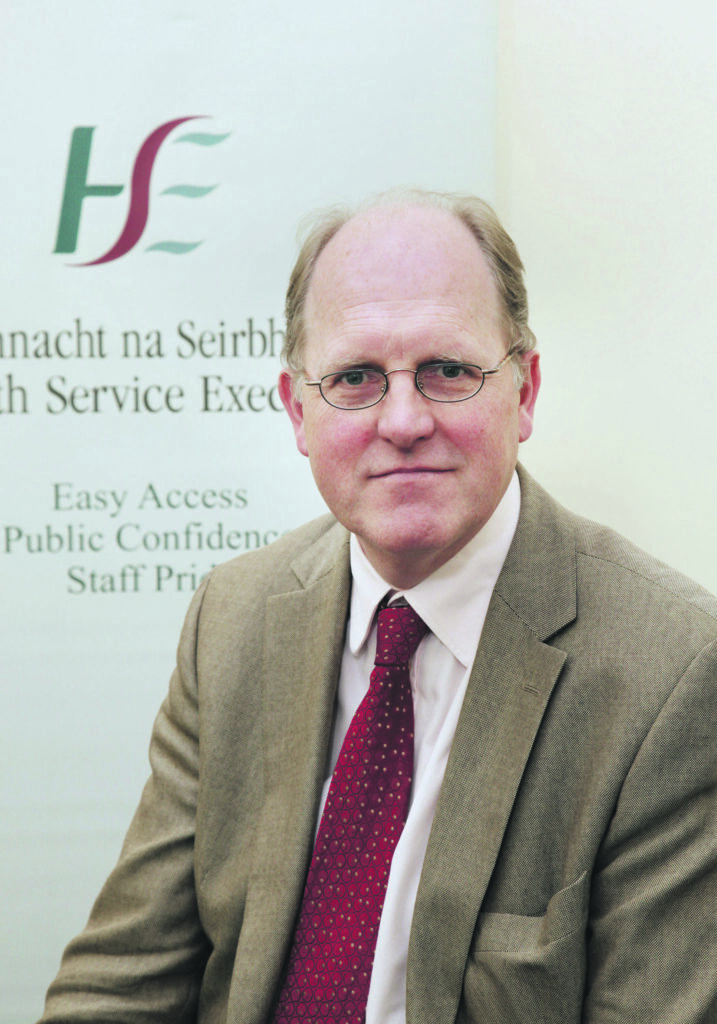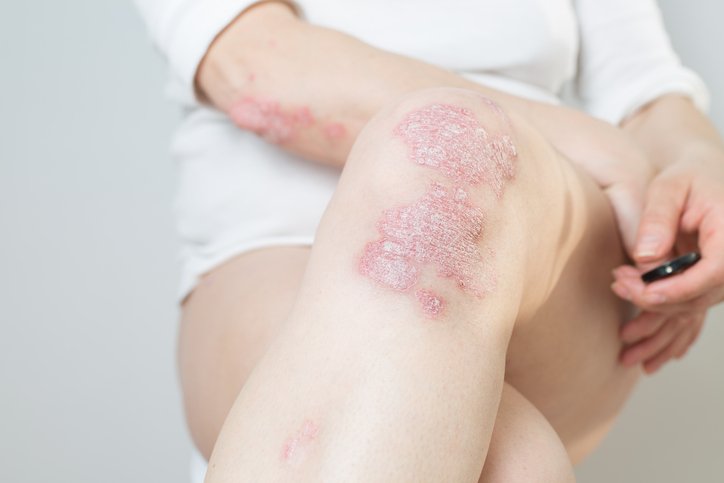Attendees at UCD’s Charles Institute Seminar Series recently heard a presentation from Prof Oliver FitzGerald on the need to improve outcomes in psoriatic conditions
The Charles Institute, Ireland’s national dermatology research and education centre, hosts a range of guest speakers who cover a variety of topics ranging from skin cancer to psoriasis, among others. The series, which is sponsored by RELIFE (part of the A.Menarini group), is designed to provide expert advice from a range of distinguished national and international experts in their respective fields and is chaired by Prof Desmond Tobin, Full Professor of Dermatological Science at UCD School of Medicine and Director of the Charles Institute of Dermatology.
The seminars are broadcast to attendees with a special interest in dermatology and cutaneous science in other locations, who accessed the talks remotely via an audio-visual link.
Attendees heard a presentation from Prof Oliver FitzGerald, Consultant Rheumatologist and Newman Clinical Research Professor at the Conway Institute for Biomolecular Research at UCD, Dublin, who delivered a talk on ‘Unmet Needs in Psoriatic Disease’, which was highlighted by Prof Tobin as a “terrific example of both interdisciplinary and translational medical science”.

Prof FitzGerald provided an overview of the risk factors for psoriatic arthritis (PsA) in patients with skin and/or nail psoriasis, as well as diagnostic challenges and the current treatment landscape, and he also provided a synopsis of biomarkers for PsA.
“I call it ‘psoriatic disease’ purposely. I would like us to get away from the terms psoriasis and PsA, because for a patient, that often pigeon-holes them into a particular category. As a result, the person who is caring for them primarily, be it a dermatologist or a rheumatologist, frequently does not appreciate all of the ways in which the disease affects the patient but rather, is sub-specialty focused,” Prof FitzGerald began.
“The term ‘psoriatic disease’ reflects the heterogeneous, polygenic nature of the autoimmune disease psoriatic disease, with all of its diverse clinical features.”
Those clinical features include skin and nail psoriasis but also include musculoskeletal (MSK) manifestations, including articular involvement or synovitis. The synovitis may be either polyarticular or oligoarticular, with the latter referring to cases where there are five or less joints involved.
Inflammation
“Apart from polyarticular or oligoarticular disease, there may be inflammation at the site of attachment of ligament to bone, so-called enthesitis” said Prof FitzGerald. “In particular, the heel seems to be targeted, both the point of insertion of the Achilles tendon into the back
of the calcaneus and insertion point for the plantar fascia on the under-surface of the heel. In addition, there are many other areas throughout the body that may be involved by enthesitis.”
Dactylitis, or sausage-shaped swelling and tenderness of a digit, is another common inflammatory PsA feature occurring in around 30 per cent of patients. There may also be spinal involvement, resulting in symptoms that are not dissimilar to ankylosing spondylitis, he explained. The radiographic features in patients with MSK involvement may be quite variable.
“There may be erosive changes present, as in rheumatoid arthritis but other more disease-specific features are found, including new bone formation. Finally, there is a list of comorbidities that we find in psoriatic disease, and perhaps even more so in those who have both skin and musculoskeletal disease. These comorbidities include obesity, hypertension, hyperlipidaemia and diabetes. All of these features in turn contribute to accelerated atherosclerosis and the increase in morbidity seen in patients with psoriatic disease,” he told the attendees.
“Thus, all of these complex features comprise the concept of psoriatic disease; it’s not just skin or articular disease, but all of the features that may occur in a patient, and that is without even mentioning the extra-skeletal, extra-cutaneous features that are part of the condition, like uveitis, which occurs in about 5 per cent of patients with PsA, or indeed inflammatory bowel disease. It really is quite a complex condition.”
I call it ‘psoriatic disease’ purposely. I would like us to get away from the terms psoriasis and PsA, because for a patient, that often pigeon-holes them into a particular category
While PsA patients usually develop their arthritis long after they first develop skin or nail psoriasis, in around 10 per cent of cases, the first manifestations may be MSK inflammation. There are various stages in the evolution of PsA before the patient receives a diagnosis and meets the CASPAR classification criteria.
Some patients may even be asymptomatic, but upon imaging with ultrasound or with MRI, inflammation may be apparent at synovial or entheseal sites, he explained. Patients then may develop musculoskeletal symptoms such as joint pain (arthralgia) or stiffness, but there may still be insufficient evidence to make a definitive diagnosis of PsA. This is just one of the many diagnostic challenges with the condition, said Prof FitzGerald.
In patients with skin or nail psoriasis, the risk factors for developing PsA, he explained, include nail disease, severe skin psoriasis, obesity and recurrent biomechanical stress or trauma. Certain infections may play a role. Whether the patient has a first-degree relative with PsA, as well as the patient’s genetic make-up, are also factors to be considered.
Diagnosis
“In dermatology clinics, screening tools, such as the PEST, are increasingly being used to screen for the presence of PsA. The problem with the PEST screening tool is that while it is sensitive, it is not very specific,” explained Prof FitzGerald. “Many of these patients who are then referred to a rheumatologist on the basis of a positive PEST may not have PsA. Our experience in the rheumatology clinic is that many of these patients have conditions like osteoarthritis or fibromyalgia or gout, while only a small percentage had PsA. We need a more specific tool for diagnosis.”
He also noted that because of the limited amount of time that a dermatologist has with a patient during a consultation, it is difficult for them to do a complete and thorough musculoskeletal assessment. “There really are no diagnostic tests for PsA, so there’s nothing you can send to the lab that will clarify the situation. As a result, many patients experience a delay in diagnosis, with studies showing that a delay in diagnosis of six months results in a poorer long-term functional and radiographic outcomes. A key unmet need therefore is the development of a diagnostic test for PsA,” Prof FitzGerald told the seminar.
Regarding treatment of PsA, he said: “We are learning about which cytokines are important and which cytokines may be important in protecting us from various infections… There is a growing repertoire of effective therapies to treat the heterogeneous clinical domains of PsA,” said Prof FitzGerald. “It is an exciting time to be able to have choices to treat to the target of remission or low disease activity and maintain that response, even if switching between agents is necessary.”
There are, however, unmet needs with the currently-approved bDMARDs, he added. “While many of our PsA patients meet the primary outcome measure — an ACR (American College of Rheumatology criteria) 20
response — at around 60 per cent; 40 per cent meet ACR 50; and 20 per cent meet the more stringent ACR 70 response — thus, many will continue to have substantial levels of disease.”
Prof FitzGerald also touched on the Innovative Medicines Initiative (IMA), an EU public-private partnership aiming to speed-up the development of better and safer medicines for patients. He explained there had been a call for research proposals to address areas of unmet need in PsA in January of this year.
These unmet needs included identification of risk factors for PsA in patients with psoriasis, the development of an early diagnostic test, prediction and possibly prevention of radiographic outcomes, and development of personalised treatment strategies to improve long-term treatment outcomes in PsA.
Thus followed a two-stage process, whereby consortia put together proposals during Stage 1 and with only one consortium chosen at the end of stage one to progress into stage two. Prof FitzGerald and colleague Dr Steve Pennington put together a consortium, entitled ‘HIPPOCRATES’, which has now been approved to move to stage two of the process. “We are currently very busy preparing that application,” said Prof FitzGerald.
“It’s very exciting; if successful, this will provide us with a unique opportunity to do something for patients with PsA; to improve their experience of the disease and to improve both short- and long-term outcomes.”
Prof FitzGerald summarised by telling the seminar: “I have highlighted significant areas of unmet need in psoriatic disease, including the identification of patients at risk, the development of an algorithm to identify those with early PsA, and the development of a precision medicine approach to PsA treatment, so as to improve outcomes. Then, there is promise of the IMI call… I am hopeful that we will be successful with the second phase of this application.”
Symptom overlap
During an interactive Q&A session, Prof Tobin addressed the question of a multidisciplinary team approach to complex diseases. He also touched on whether the systemic nature of the disease influences a biomarker search. “How closely should we be looking at the earliest ‘dominoes to fall’ vs the separation of these two conditions, ie, the skin-specific and joint-related versions of them?” he asked.
Prof FitzGerald responded by agreeing on the systemic nature of the disease and he referenced a study where skin, synovial and fat biopsies were taken from patients with PsA: “What I thought was very interesting was that when they looked at cytokine gene expression, there was similar cytokine gene expression in all three tissues,” he said.
“It’s also interesting that not everybody moved from psoriasis to PsA. It may be that there is some sort of trigger or exposure to infection or a change in microbiome, for example, that may be stimulating immune activation at a local site. This may result in the disease moving from only having skin involvement to the more systemic process. I think that’s an area that we need to be studying now.”
RELIFE has had no input into the content of this article or series of seminars













Leave a Reply
You must be logged in to post a comment.